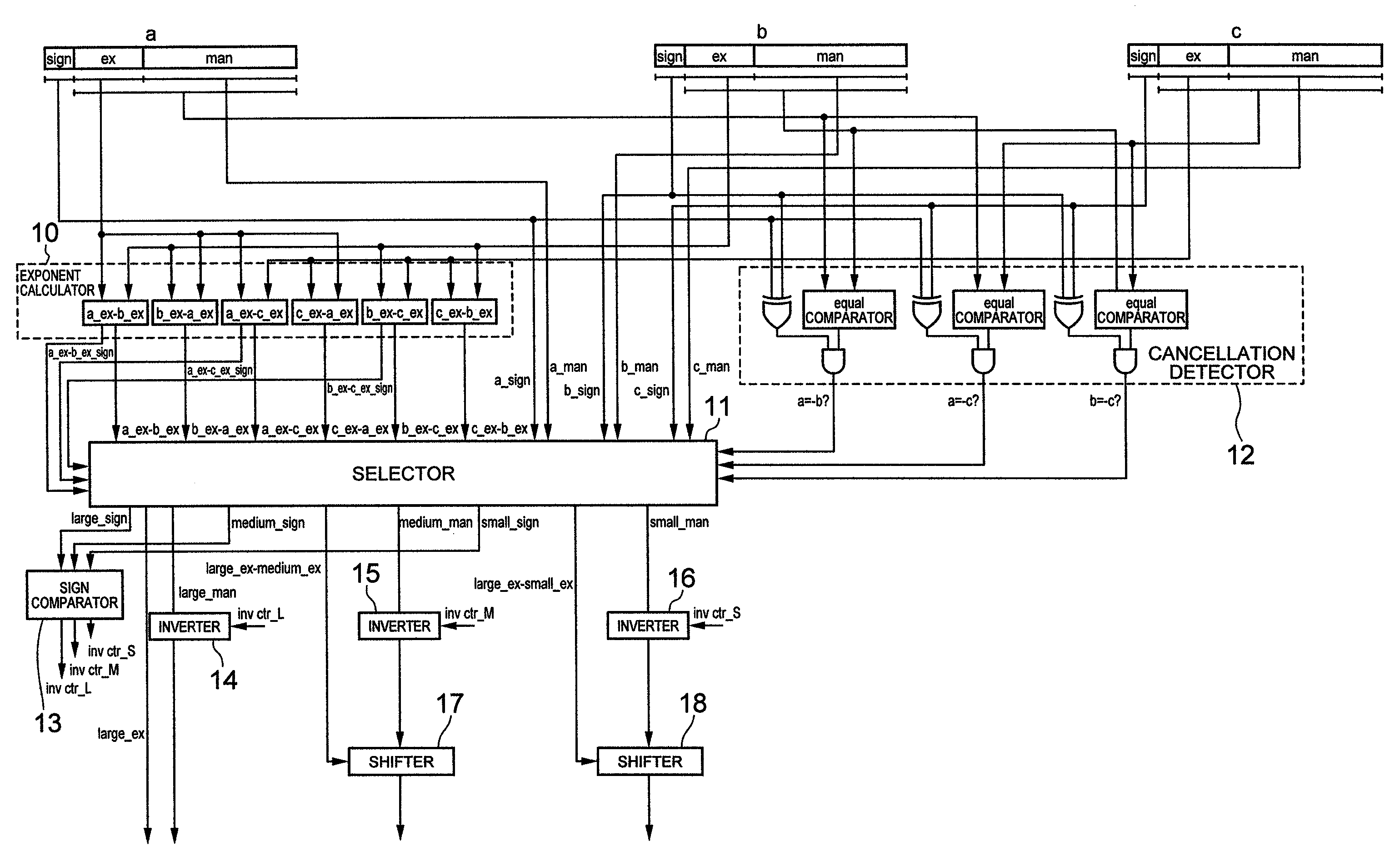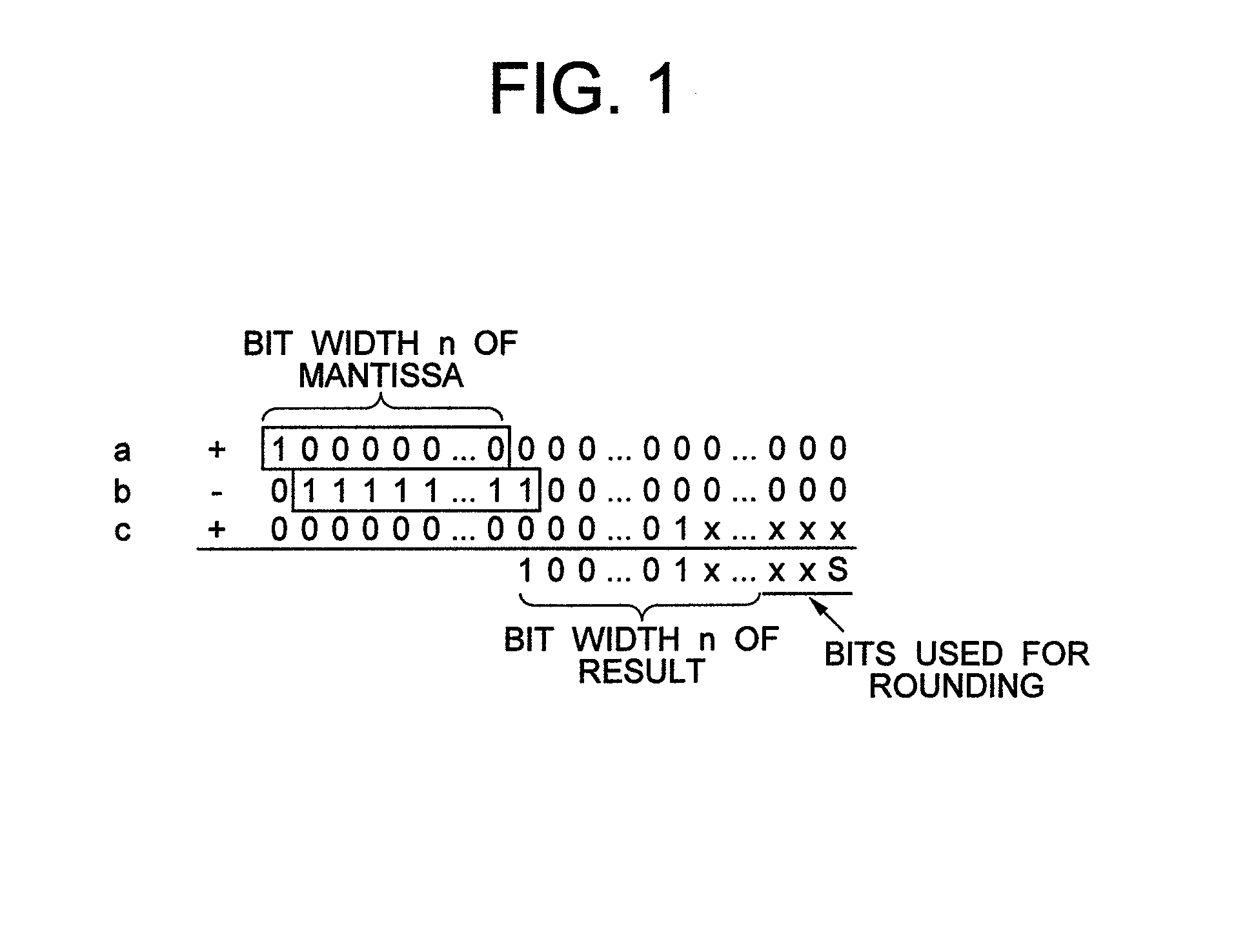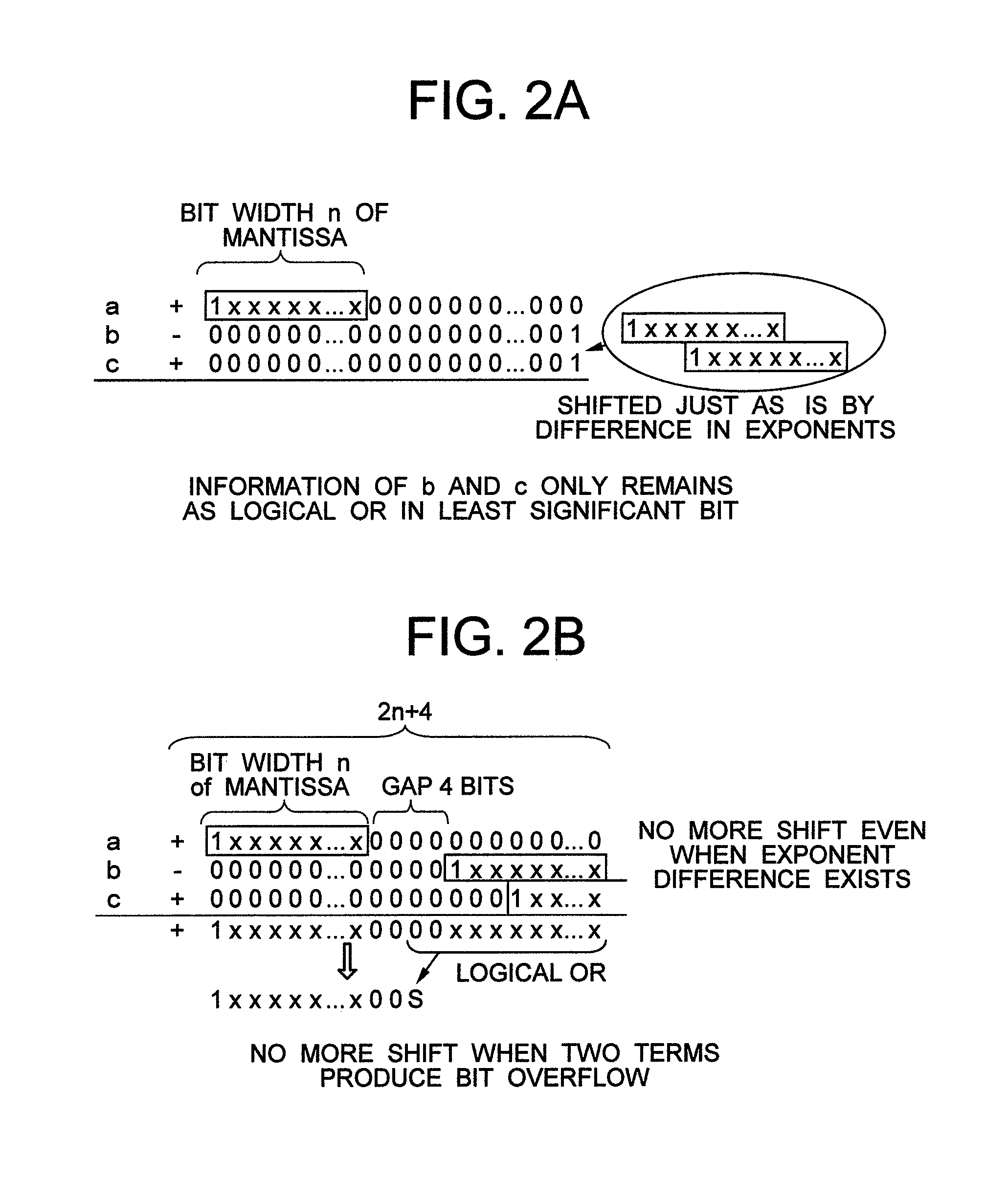Three-term input floating-point adder-subtractor
a floating-point adder and subtractor technology, applied in the field of floating-point adder subtractors, can solve the problems of point addition and subtraction, loss of information necessary for the precise result, and difficulty in obtaining a precise resul
- Summary
- Abstract
- Description
- Claims
- Application Information
AI Technical Summary
Benefits of technology
Problems solved by technology
Method used
Image
Examples
Embodiment Construction
[0050]Hereinafter, embodiments of a three-term input floating-point adder-subtractor according to the present invention will be explained, but solutions by the present invention will be explained briefly first. In the explanations below, suppose a first operand with inputs of three terms is a, a second operand is b and a third operand is c.
(1) Solution when Two Out of Three Terms Cancel Out Each Other (FIG. 15)
[0051]In this case, the problem can be solved by checking cases where cancellation occurs (a=−b, a=−c, b=−c) using a comparator before carrying out addition so that the result becomes c when a=−b, the result becomes b when a=−c and the result becomes a when b=−c.
(2) Solution when Loss of Significant Digits Occurs in Two Out of Three Terms Having Larger Absolute Values (FIG. 16)
[0052]FIG. 1 illustrates a solution when loss of significant digits occurs in two out of three terms having larger absolute values (FIG. 16).
[0053]The problem in this case can be solved by causing the bi...
PUM
 Login to View More
Login to View More Abstract
Description
Claims
Application Information
 Login to View More
Login to View More - R&D
- Intellectual Property
- Life Sciences
- Materials
- Tech Scout
- Unparalleled Data Quality
- Higher Quality Content
- 60% Fewer Hallucinations
Browse by: Latest US Patents, China's latest patents, Technical Efficacy Thesaurus, Application Domain, Technology Topic, Popular Technical Reports.
© 2025 PatSnap. All rights reserved.Legal|Privacy policy|Modern Slavery Act Transparency Statement|Sitemap|About US| Contact US: help@patsnap.com



